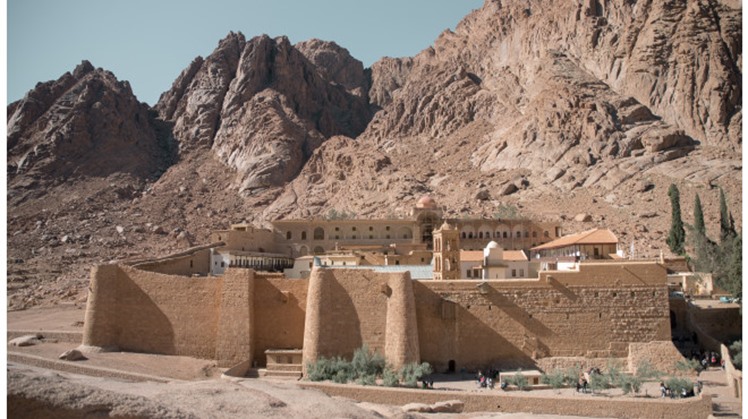No wonder Christian tourists flock to Saint Catherine's Monastery at the foot of Mount Sinai and recognized as the world's oldest continuously operating monastery. The site can be traced back to the fourth century AD when the Roman Empress Helena called for the construction of a sanctuary, later in the sixth century. Emperor Justinian established a monastery on the site with a mausoleum and fortified walls.
Today the library of St. Catherine's Monastery holds evidence of its rich history in the form of more than 4,000 rare manuscripts of the Middle Ages and the ancient, these include religious documents such as the Codex Sinaiticus which is the oldest written copy of the New Testament compiled in the 4th century, St. Catherine's Library also contains works in history, philosophy and medicine in 13 different languages including Latin, Arabic, Aramaic and Syriac.
In 2011 the University of California Library and a non-profit research organization the Early Manuscripts Electronic Library (EMEL) began working in Saint Catherine to implement multispectral imaging of documents and manuscripts and since then have uncovered more than 300 unread texts since the Middle Ages. this process.
To preserve the library's cultural heritage collection UCLA and EMEL have continued their work with St. Catherine beyond the original plan to digitize its entire (huge) collection, the library's scale second only to the Vatican Library, and has long attracted scholars and visitors from all over the world.
Researchers are currently working through Syriac and Arabic manuscripts, including documents related to the Islamic Golden Age, which stretched back to the eighth and thirteenth centuries, in which ancient Greek knowledge was translated into Arabic and fostered scientific and cultural achievement, says Todd Grapon, the university's associate librarian for digital and information technology initiatives. UCLA: "It's a unique place we felt we couldn't stop what we started - we had to keep going," he continued: "We felt the need to get in there and digitize some of the material that was at risk in order to ensure that future generations of researchers would have access to This content.
The project team aims to produce about 400,000 images of rare documents in the first phase alone, which is scheduled to end next March.
 Mon, Feb. 14, 2022
Mon, Feb. 14, 2022